Mention actor Toshiro Mifune, directors Ishiro
Honda and Akira Kurosawa, or Japanese special effects giant Eiji Tsuburaya and many
Westerners might say I know that name. Mention FUMINORI OHASHI and they
draw a blank. That is because Ohashi, even in today's Japan, is an
anonymous name to many. This purpose of this article's is to shed some light on his life.
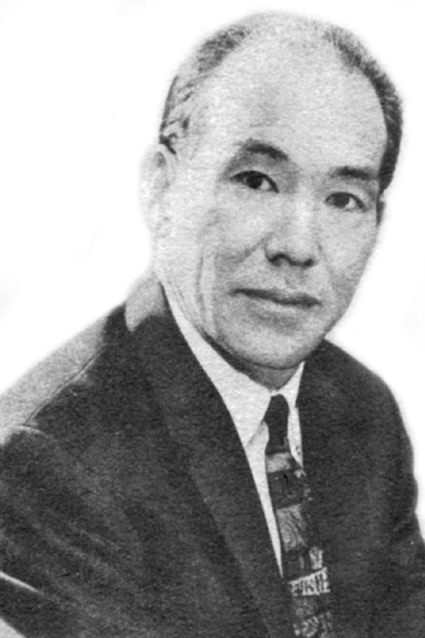
I first discovered Fuminori Ohashi while researching my article "Images of KING KONG: 1933, the Japanese Interpretations and the American Remakes" in December 2016. My published article from January 27, 2017 can be read at:
http://www.bewaretheblog.com/2017/01/images-of-king-kong-1933-japanese.html
Fuminori Ohashi was born in Ehime, Japan, on January 10, 1915. His birth name was Yukitoshi Ohashi. I could not locate any information on his early life, his parents, or his education.

I first discovered Fuminori Ohashi while researching my article "Images of KING KONG: 1933, the Japanese Interpretations and the American Remakes" in December 2016. My published article from January 27, 2017 can be read at:
http://www.bewaretheblog.com/2017/01/images-of-king-kong-1933-japanese.html
Fuminori Ohashi was born in Ehime, Japan, on January 10, 1915. His birth name was Yukitoshi Ohashi. I could not locate any information on his early life, his parents, or his education.
What we do know is that in 1935 Yukitoshi started work at
the Shochiku Company Limited Motion Picture Studio as an assistant director, usually another name for a "gofer" and cameraman. Three years later he was acting for the studio.
The first specific motion picture referenced for Ohashi's work is the 1938 Japanese silent "King Kong". Which was a period piece set in the old capital of the Japan.
EDO NI ARAWARETA KINGU KONGU (KING KONG APPEARED IN EDO)

The first specific motion picture referenced for Ohashi's work is the 1938 Japanese silent "King Kong". Which was a period piece set in the old capital of the Japan.
EDO NI ARAWARETA KINGU KONGU (KING KONG APPEARED IN EDO)

Above is an ad for the motion picture from the April 1938 issue of the
motion picture publication "Kinema Junpo".
"Edo ni Arawareta Kingu
Kongu" was a production from one of
Japan's own "Poverty Row" studios "Zensho
Cinema". It was actually two separately released silent motion
pictures, Each film had the main movie title with an added subtitle explaining
each part specifically. Part One was "The Episode of the
Monster", released March 31, 1938 and Part Two was "The
Episode of Gold", released April 7, 1938.
The film was directed by Soya
Kumagi. According to IMDb, Kumagi has a total of five directing credits to his
name and between 1938 and 1940. This film counted as two of the
five.
The screenplay was by Daijo Aoyama,
Who is shown with only two other screenplays beyond this motion picture.
Fuminori Ohashi is credited with the "Special Effects" and the creation of the "Anthropoid" suit.
He is also the actor listed as Ryunosuke Kabayama wearing it.
Daijo Aoyama's screenplay has "Chinami", played
by Reiko Mishima, the daughter of a rich Sponge Fishery owner, "Hyoei
Toba", played by Reizaburo Ichikawa, being kidnapped. One of the
sponge fisherman, "Magonoyjo Go", played by Eizaburo
Martsumoto, doesn't join the search, because he's "Chinami's"
kidnapper. "Magonoyjo's" father "Senbei", there
is no information on the actor in the role, has a pet ape named "King
Kong". "Magonoyjo" forced it to kidnap the
girl. The reason for the kidnapping is revenge, because the girl's father forced the
kidnapper's father to create counterfeit coins.
A reward for the finding of
"Chinami" is offered and "Magonoyjo"" plans to trade
the girl for the reward. He has "King Kong" take her father, who is
being followed by his own men, to a secret cellar. "Magonoyjo" is given
the reward, but the ape goes berserk and kills "Hyoei".
"Hyoei's" men in turn kill the ape as "Magonoyjo" gets
away with the reward and leaves Edo.
Except for the publicity stills,
inspired by the Merian C. Cooper 1933 "King Kong", the
ape is not a giant, but human size, Many have mentioned the ape creature
appears to be more like a Yeti than a gorilla of any size.
Below is another publicity still and
you see the proper proportions.

The movie is considered a Lost
Motion Picture, but there is a fake 35 second video
clip on YouTube. It claims to be from "King Kong Appeared in
Edo", but it was made with a shot from an 1977 Italian Yeti
movie "Yeti: Giant of the 20th Century".
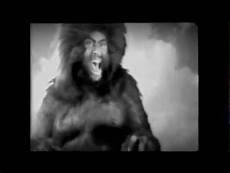


"Edo ni Arawareta Kingu Kongu" gets confused with the 1933, 30 minute, Japanese comedy
short "Wasei Kingu Kongu (Japanese King Kong)". Fuminori Ohashi was not involved with that picture and is about a man in a gorilla suit
appearing on stage as "King Kong". The film was from the Shochiku
Company Limited Studio, which adds to the confusion. It was also authorized by
RKO Studios, who released the original American film, to use the name "King
Kong".

There is a quote, I found on one website, that
is attributed to Fuminori Ohashi in a 1988 interview. The year may be incorrect, but the quote reads:
The first model making to be counted as 'special art direction' in Japanese cinema was a giant gorilla which I did for the movie King Kong Appears in Edo fifty years ago. It was also the first movie to feature certain kinds of special effects
One of those referenced as possibly
conducting the interview is August Ragone Who is the author of the excellent "Eji
Tsuburaya: Master of Monsters: Defending the Earth with Ultraman, Godzilla, and
Friends in the Golden Age of Japanese Science Fiction",
I asked August, while writing this
article, about Fuminori Ohashi. He told me:
I wrote the most on him ever in English back in the early 1990s for Markalite #5, which was never published. I believe that article ended up on one of our websites, and then it was co-opted by another.
Possibly backing up what August replied to me is an article by Bob Johnson entitled "The Space
Giants Series". Johnson's article is found on the website "SciFyJapan". It contains several quotations from Fuminori Ohashi, but each quotes source is not specified as Bob Johnson just lists several publications in the articles heading. So I could not verify them..
http://www.scifijapan.com/articles/2007/08/27/the-space-giants-series-guide/#making
In 1938 Fuminori Ohashi was cast in a motion picture known as "Gankutsu-o-Tarzan". Once again he used the name Ryunosuke Kabayama and portrayed the Edgar Rice Burroughs character "Tarzan". What the motion pictures screenplay was about is unknown. The only other name mentioned in the cast was Toshiko Miyagawa, but his role is unknown. We do know the picture was directed by Kanenori Yamada and written by Shutaro Nachi. This was the first in series, unknown number at this date, that was made by Shochiku Studio.
In 1938 Fuminori Ohashi was cast in a motion picture known as "Gankutsu-o-Tarzan". Once again he used the name Ryunosuke Kabayama and portrayed the Edgar Rice Burroughs character "Tarzan". What the motion pictures screenplay was about is unknown. The only other name mentioned in the cast was Toshiko Miyagawa, but his role is unknown. We do know the picture was directed by Kanenori Yamada and written by Shutaro Nachi. This was the first in series, unknown number at this date, that was made by Shochiku Studio.
I could not locate what Ohashi did during World War 2. However, after the war, in 1948, he starting working as a model and suit builder for "Takara Productions". Fuminori Ohashi created the kaiju for what some websites state was the studios 1948 picture "Ninjutsu Jiraiya".
For that production Fuminori Ohashi pioneered using a latex compound for monster suits. I looked for information on the 1948 "Ninjutsu Jiraiya" and images of Ohashi's work, but could not locate the title on several lists of Japanese motion pictures. The only two films they listed, with that specific title, were from 1921 and 1955 by director Tai Kato. However, some lists of Kato's motion picture do not list the 1955 feature at all.
Depending on the website Ohashi either left Japan for the United
in 1950, or 1952. At which time he joined the Walt Disney organization as a
model builder for the future "Disneyland", in
Anaheim, California. He worked at the Disney Studio, in Burbank, for the two
years before returning to Japan and joining Eiji Tsuburaya's team at "Toho
Studios".
GOJIRA premiered on October 27, 1954 in Nagoya, Japan


According to a quote, without a specific reference, in the Bob Johnson article. Oshashi stated he worked on the creation of the original suit for "Gojira" under Teizo Toshitisu and Akira Watanabe. Who worked under the direction of Eiji Tsuburaya. The original suit was extremely heavy for the suitmation actor and the quote relates to changes made afterwards:
Later it became possible to use softer latex to make monsters like Rodan and Mothra. Other harder monsters like Moguera I made with rubber and plastic. These were done at Ohashi Design (Ohashi Kogeshia), a company I started in 1955Considering the above quote as accurate. Fuminori Oshashi implies his company was a subcontractor on the Toho Studio motion pictures "Sora no Daikaiju Radon (Giant Monster of the Sky, Radon)" released in Japan December 26, 1956. "Chikyu Boeigun (Earth Defence Force) aka: "The Mysterians" released in Japan December 28, 1957 and "Mosura (Mothra)" released July 30, 1961 in Japan.
Below a sequence from "Sora no Daikaiju Radon" involving miniatures that Oshashi's company may have worked on. Along with the original designed "Radon-Rodan" costume.

Below the mention, by Oshashi, "Moguera" from "Chikyu Boeigun".

Below a sequence for "Mosura" involving miniatures.

Just before his company was founded Fuminori Ohashi assumed his second acting identity of Sanshiro Sagara. I came across the name without making the connection for the Ishiro Honda motion picture "Ju Jin Yuki Otoko (Beastman Yukio aka: Mountain Snowman)". That was part of my article: "The Abominable Snowman As First Interpreted By Filmmakers 1954 to 1967". Which can be found at:
http://www.bewaretheblog.com/2020/02/the-abominable-snowman-as-first.html

Additionally, as Fuminori Ohashi, he helped
make the suit he wore. I considered it the best of all of the
"Snowman-Yeti" costumes ever made.
We know that Ohashi supplemented his model and kaiju creation work, for the films mentioned above and others, with small acting roles between 1956 and 1963. However, when you look at photo's of the cast and crew of the Samurai motion pictures Fuminori Ohashi appeared in. The photo used above his name seems to always be:

One of the classic Samurai series
of the 1950's was from director Hiroshi Inagnaki. What is known as "The
Samurai Trilogy" starred Toshiro Mifune as "Miyamoto
Musashi" and Koji Tsuruta as "Kojiro
Saski". On January 1, 1956, in Japan, the final installment "Miyamoto
Musashi kanketsuhen: ketto Ganryujima (Miyamoto Musashi Conclusion Duel
Ganryujima)" premiered. In Western countries the film was
titled: "Samurai III: Duel at Ganryu Island".
Should you pay attention to the cast list. My reader will find with 28th billing as a "Samurai" the name Fuminori Ohashi. The following year, on April 14, 1957 Ohashi appeared in a second Samurai feature for Hiroshi Inagnaki "Yagyu bugeicho (The Secret Scrolls)". Once more Toshiro Mifune starred in the film and if you again look at the 25th billing. The name of Fuminori Ohashi appears as a Samurai.
Back on January 15, 1957 Ohashi appeared, as a Samurai. in the first of four motion pictures by acclaimed Japanese director Akira Kurosawa.
That first motion picture was "Kumonosu-jo (Spider Web Castle)" better known in Western Countries as "Throne of Blood" and the first time Kurosawa transferred William Shakespeare to Japan with "Macbeth". This is a very moody black and white feature film that I recommend to all my readers. It stars Toshiro Mifune in the "Macbeth" role and Isuzu Yamada in the "Lady Macbeth" role.
My article: "William Shakespeare By Akira Kurosawa: Kurosawa By American and Italy" may be read at:
Should you pay attention to the cast list. My reader will find with 28th billing as a "Samurai" the name Fuminori Ohashi. The following year, on April 14, 1957 Ohashi appeared in a second Samurai feature for Hiroshi Inagnaki "Yagyu bugeicho (The Secret Scrolls)". Once more Toshiro Mifune starred in the film and if you again look at the 25th billing. The name of Fuminori Ohashi appears as a Samurai.
Back on January 15, 1957 Ohashi appeared, as a Samurai. in the first of four motion pictures by acclaimed Japanese director Akira Kurosawa.
That first motion picture was "Kumonosu-jo (Spider Web Castle)" better known in Western Countries as "Throne of Blood" and the first time Kurosawa transferred William Shakespeare to Japan with "Macbeth". This is a very moody black and white feature film that I recommend to all my readers. It stars Toshiro Mifune in the "Macbeth" role and Isuzu Yamada in the "Lady Macbeth" role.
My article: "William Shakespeare By Akira Kurosawa: Kurosawa By American and Italy" may be read at:

|
Fuminori Ohashi's second motion picture for Kurosawa was released December 28, 1958 and was "Kakushi-toride no san-akunin (Three Villains of the Hidden Fort)" known in Western Countries as "The Hidden Fortress".
Ohashi's third Akira Kurosawa motion picture was "Yojinbo" aka: "Yojimbo". The
feature was released in Japan on April 25, 1961. Toshiro Mifune's character
of "Sanjuro Kuwabatake/The Samurai" was turned
into "Joe" by director Sergio Leone for the
September 12, 1964 release in Italy of "Per un pugno di dollari
(For a bunch of dollars)" starring American Clint Eastwood in the
role. That story is part of my article on Kurosawa.
The actor's final film with director Kurosawa was another classic "Tsubaki Sanjuro" aka: "Sanjuro" released in Japan on January 1, 1962 starring, of course, Toshiro Mifune. Then it was back to Hiroshi Inagaki with "Doburoku no Tatsu" released April 29, 1962. The last motion picture Fuminori Ohaashi appeared in was "Yagyu bugeicho: Katame no Jubei". Which was the fifth and final film of "The Secret Scrolls" series that premiered in Japan on February 23, 1963, but was directed by Kokichi Uchide.
Ohashi returned to being the modeler and special effects creator on "Kujira Gami (Killer Whale)" aka: "Whale God" released in Japan on July 15, 1962. This variation of Herman Melville's "Moby Dick" had a fishing village battle a giant whale.
The actor's final film with director Kurosawa was another classic "Tsubaki Sanjuro" aka: "Sanjuro" released in Japan on January 1, 1962 starring, of course, Toshiro Mifune. Then it was back to Hiroshi Inagaki with "Doburoku no Tatsu" released April 29, 1962. The last motion picture Fuminori Ohaashi appeared in was "Yagyu bugeicho: Katame no Jubei". Which was the fifth and final film of "The Secret Scrolls" series that premiered in Japan on February 23, 1963, but was directed by Kokichi Uchide.
Ohashi returned to being the modeler and special effects creator on "Kujira Gami (Killer Whale)" aka: "Whale God" released in Japan on July 15, 1962. This variation of Herman Melville's "Moby Dick" had a fishing village battle a giant whale.

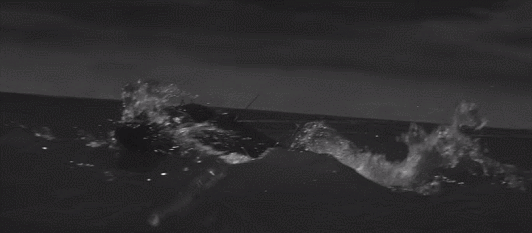
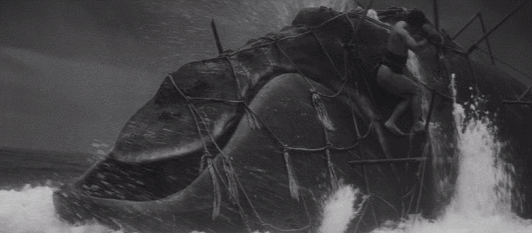
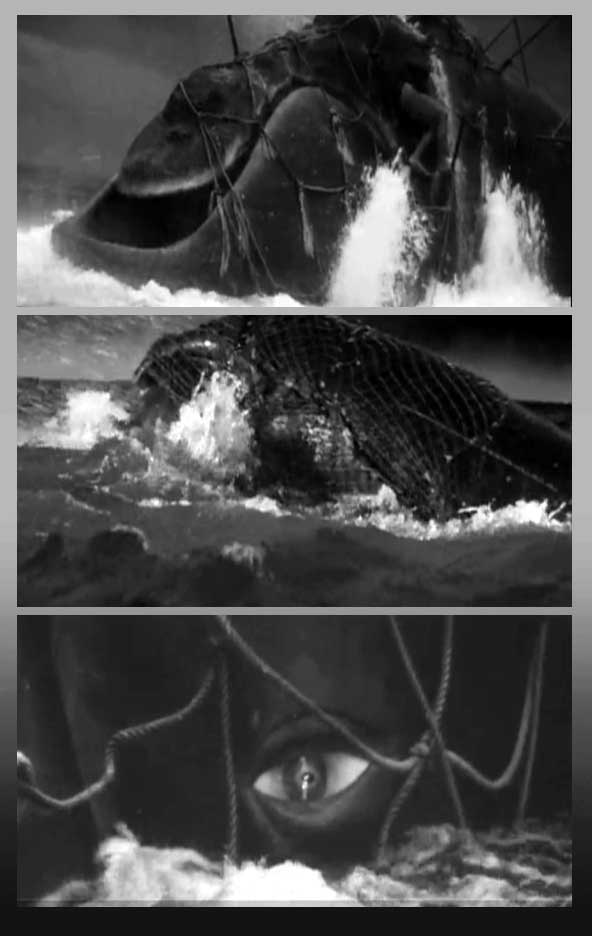
KINGU KONGU TAI GOJIRA (KING KONG VS GODZILLA) premiered in August 11, 1962 in Japan
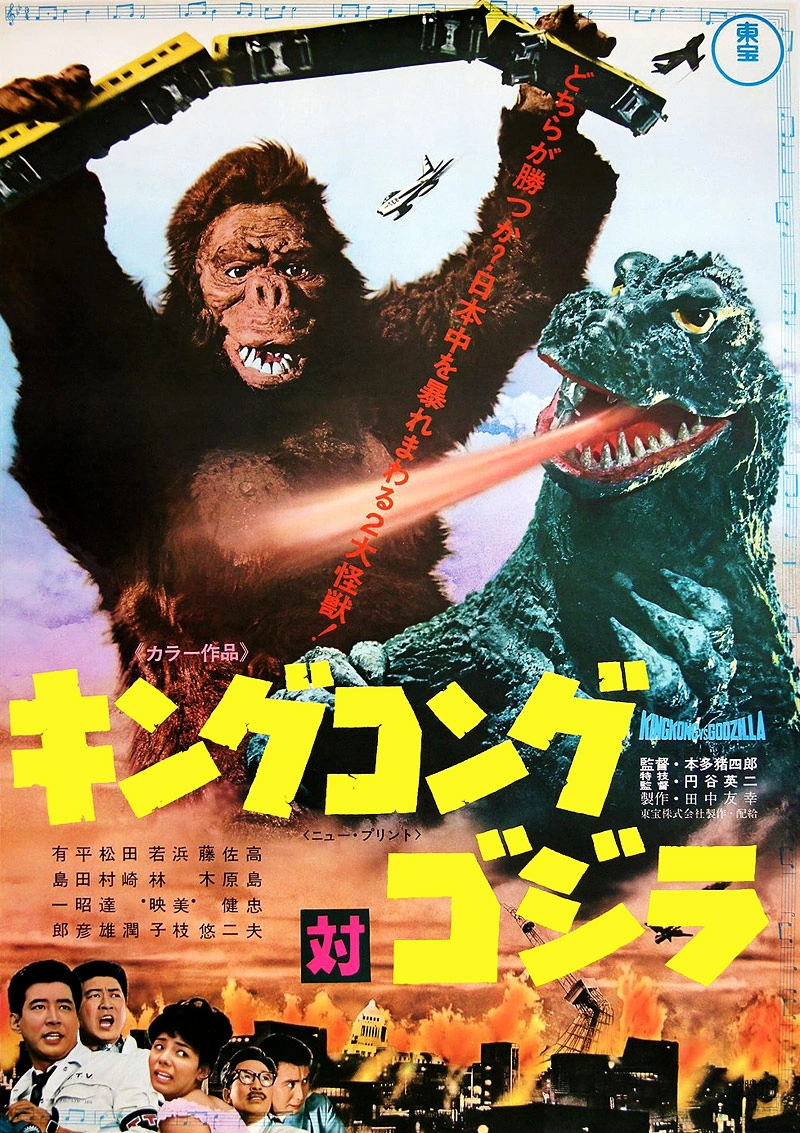
Once again in a special effects position, as with 1954's "Gojira", Fuminori Ohashi's title was the non-screen credited "Special Effects Technical Adviser".
I confirmed that Fuminori Ohashi signed a contract to create kaiju and other creatures for "Nippon Demapa Eiga (Japan Radio Pictures)" in 1964. There is some confusion over his work on "Jangurupuinsu (Jungle Prince)". Some sites give the impression the series was in 1964, but it ran for only 26 episodes from July 6, 1970 to August 10, 1970.
The probable reason for this confusion is that in 1964 Ohashi was creating the character for "Maboroshi no Daikaiju Agon (Phantom large monster Ago)" aka: "Giant Phantom Monster Agon". Fuminori Ohashi would also direct episodes 3 and 4. His only known directing assignment.

The obvious in the following stills is how much "Agon" resembled "Gojira".
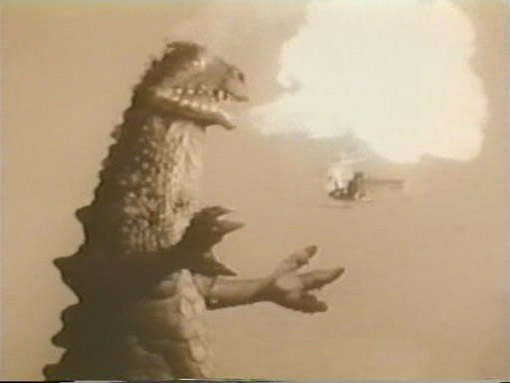

I turn to page 108 of August Ragone's biography of Eiji Tsuburaya I mentioned above:
.....In 1964, Japan Radio Pictures produced a four-episode miniseries called Argon the Atomic Dragon (Kaiju Agon), about a giant monster similar in appearance to Godzilla---so much so that Toho objected to the production. But upon discovering that the creator of the monster was former Toho employee Fuminori Ohashi, Toho essentially said, "Oh, it's you! Well, it's okay then!
However, apparently Toho Studios did
prevent the film from being broadcast in 1964 and the series finally was seen
on on "Fuji TV" from, January 2 to January 8, 1968.
It would be released, by Toho Studios, as a feature film in the 1990's,
In early 1965 Fuminori Ohashi
received an offer from the American television company "Screen
Gems" to make a monster movie. However, that fell through, but
another came from "P Productions" to create
characters for their new program "Maguma Taishi (Ambassador
Magna)".
The series was created by manga writer Osamu Tezuka. Tezuka was the creator of "The Mighty Atom (Astro Boy)" and "Jungle Emperor (The White Lion)" that many considered was ripped off by Walt Disney Pictures and became 1994's animated "The Lion King".
Ohashi planned to make all the costumes for the series, but he was still under contract to "Nippon Demapa Eiga" and they would recall him. However, he was able to make five costumes. Three were designed by himself and were "Aron", "Birdora" and "Ambassador Magna". The other two he made were "Lord Goa" and "Moguness".

Above "Ambassador Magna" and "Lord Goa".
When Fuminori Ohashi returned he was made President of "Nihon Kabushiki Gaisha" aka: "Japan Special Effects Incorporated". One of the productions under Ohashi was "Kaiju ouji (Monster Prince)". The program ran on "Fuji TV" from October 2, 1967 through March 25, 1968.

The series was created by manga writer Osamu Tezuka. Tezuka was the creator of "The Mighty Atom (Astro Boy)" and "Jungle Emperor (The White Lion)" that many considered was ripped off by Walt Disney Pictures and became 1994's animated "The Lion King".
Ohashi planned to make all the costumes for the series, but he was still under contract to "Nippon Demapa Eiga" and they would recall him. However, he was able to make five costumes. Three were designed by himself and were "Aron", "Birdora" and "Ambassador Magna". The other two he made were "Lord Goa" and "Moguness".

Above "Ambassador Magna" and "Lord Goa".
When Fuminori Ohashi returned he was made President of "Nihon Kabushiki Gaisha" aka: "Japan Special Effects Incorporated". One of the productions under Ohashi was "Kaiju ouji (Monster Prince)". The program ran on "Fuji TV" from October 2, 1967 through March 25, 1968.




Just as Ohashi went to Burbank, California to help work on Walt Disney's amusement park. In May of 1967 he went to Culver City, California and "20th Century Fox" to work on a Science Fiction Motion Picture the Executives were still arguing over, if it should go into production. The feature in question was entitled "Planet of the Apes". Most sites, including IMDb, misstate the year as Ohashi went to Culver City as 1968 the year the movie was released.
Fuminori Ohashi was one of seventeen make-up artists that received
no on-screen credit for their work. That went to John Chambers, who won an
honorary Academy Award for his Make-up designs, Edith Lindon, hairstylist, and
Ben Nye and Daniel C. Striepeke, make-up artists.
I could not locate any specific information about Ohashi's work between 1968 and 1977, However, on April 29, 1977, in Japan, was the premier of "Kyoryu Kaicho No Densetsu".
The translation into English of the original Japanese illustrates the problems with translations. One translation is "Legend of Dinosaurs and Ghosts", another "Legend of Dinosaurs and Ominous Birds", while a third has the translation as "Legend of Dinosaurs and Monster Birds". The second translation is the official Toei Studio'a English version. While the last is the official Worldwide English language release title.
Fuminori Ohashi modeled both the Plesiosaurus and
the Rhamphorhynchus with the title "Special Effects Technical Adviser".
There are no multiple "Dinosaurs" in the feature. Even if that's what the picture's title implies, because there is only Ohashi's "Plesiosaurus". Which technically is not a "Dinosaur", but a "Sauropterygia" or "Aquatic Reptile".
There are no multiple "Dinosaurs" in the feature. Even if that's what the picture's title implies, because there is only Ohashi's "Plesiosaurus". Which technically is not a "Dinosaur", but a "Sauropterygia" or "Aquatic Reptile".
As with the dinosaurs there are no "Monster Birds", or otherwise, in the motion picture. Instead the audience sees only Ohashi's "Rhamphorhynchus". Which is technically
not a "Bird", but a "Basal Pterosaur".

This might sound somewhat familiar? A girl in the "Sea of Trees" region of "Mt. Fuji" suddenly falls into a cavern and is knocked out. When she awakens there are giant prehistoric eggs near by and one starts to crack open.

This might sound somewhat familiar? A girl in the "Sea of Trees" region of "Mt. Fuji" suddenly falls into a cavern and is knocked out. When she awakens there are giant prehistoric eggs near by and one starts to crack open.

Above Fuminori Ohshi'a Plesiosaurus is taking a bite out of his Rhamphorhynchus.
Does this also sound somewhat familiar? The film ends with "Mt. Fuji" erupting and the Plesiosaurus and the Rhamphorhynchus dying in the lava.
Fuminori Ohashi passed away into obscurity, at age 74, on September 20, 1989. I hope, as I wrote at the beginning, to have shed some light on his life and illustrate to some of my readers. That there are many unknown men and women behind a feature film.
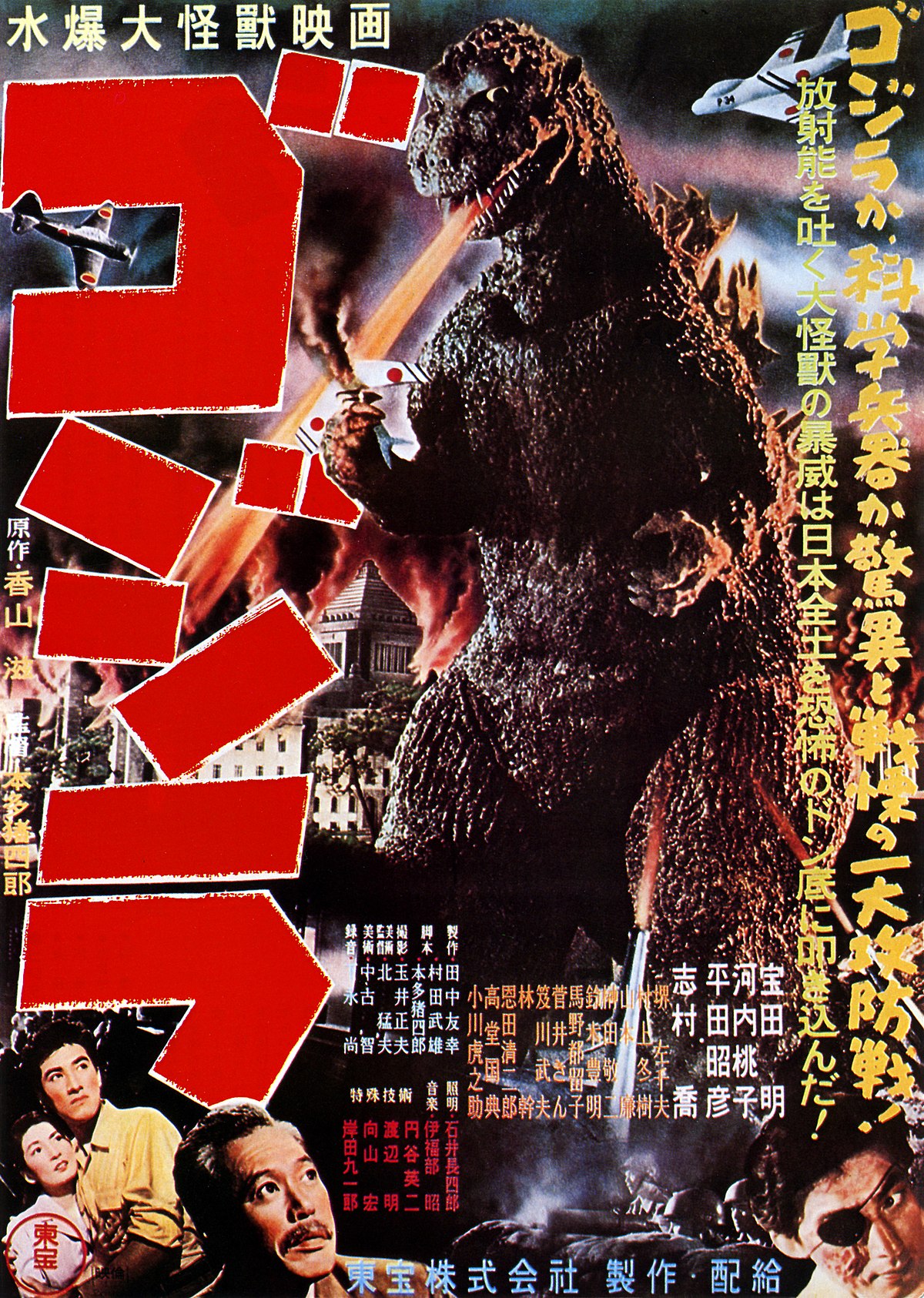






No comments:
Post a Comment